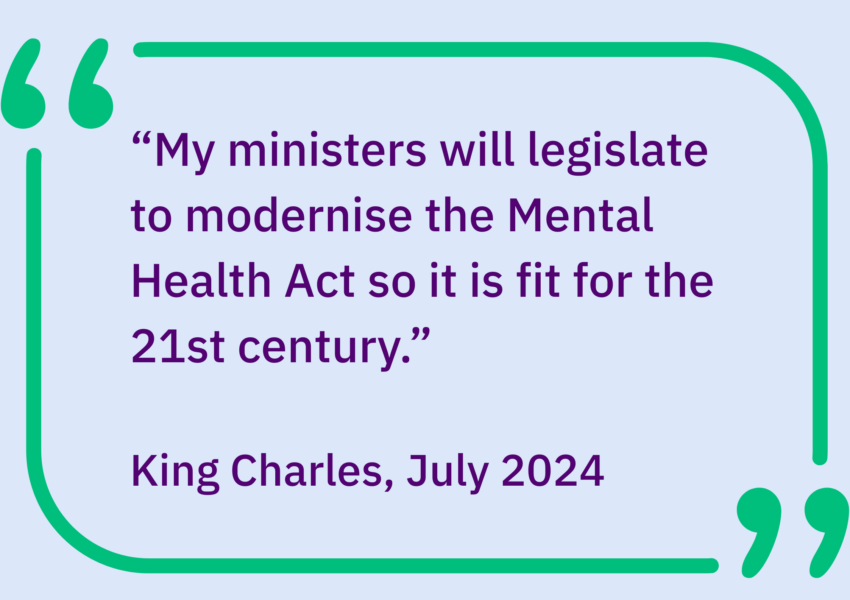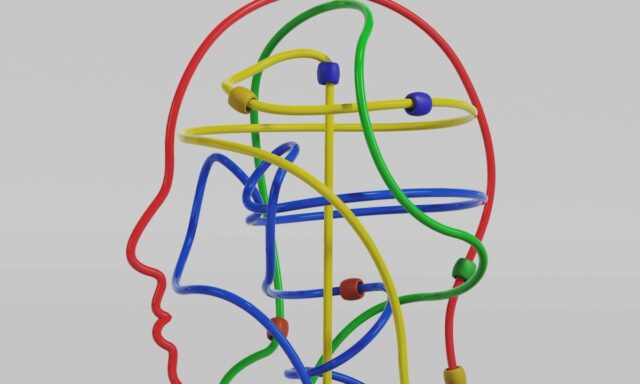
The Mental Health Act is the law that governs how people in England and Wales can be treated for serious mental illness when they are unable or unwilling to consent to care. It sets out when someone can be detained in hospital (commonly known as being “sectioned”), what safeguards and rights apply, and how decisions should be made in a person’s best interests.
After more than 40 years, this law is being reformed. The upcoming Mental Health Bill aims to create a system that is more modern, more respectful of people’s rights, and better equipped to deliver therapeutic care. This explainer walks through the background, what’s changing, what isn’t, when changes might happen, and how those impacted — especially NHS and Local Authority services — can prepare.
What is the Mental Health Act and where did it come from?
First introduced in 1983, the Mental Health Act is the legal foundation for compulsory mental health care in England and Wales. It allows for the assessment and treatment of individuals with serious mental disorders in hospital or the community — even if they do not agree to that care — when there are concerns about their own safety or the safety of others.
The Act replaced older laws tied to the asylum system and was a step toward more patient-centred care. It introduced new protections such as rights to appeal detention, independent tribunals, and aftercare planning. Its core structure remains largely unchanged. This is despite major shifts in clinical practice, public attitudes, and legal expectations around autonomy, consent, and human rights.
As a result, many now see the 1983 Act as outdated. It was designed for a different pre-digital era, and, while it still serves a crucial role, it doesn’t always align with modern approaches to patient voice, community-based care, or cultural sensitivity. While COVID-19 saw changes implemented to support restrictions in place, up until that point some statutory forms were required to be completed on paper.
Extra reading:
What is the context for the reform it is currently going through?
The call for reform began in earnest following the 2018 Independent Review of the Mental Health Act, led by Professor Sir Simon Wessely. That review was prompted by growing concerns about rising detention rates, the traumatic experiences of many patients, and stark inequalities in how the Act is applied.
One of the most pressing issues is the persistent racial disparity. Black people are over three times more likely to be detained under the Act than white people, and more likely to be placed on restrictive Community Treatment Orders (CTOs). People with autism or learning disabilities have also been detained for long periods in inappropriate hospital settings due to a lack of suitable community alternatives.
The review concluded that the Act was no longer fit for purpose in key areas. It recommended that the law be updated to give people more control over their care, reduce coercion, and put therapeutic benefit and dignity at the centre of decision-making. It also made the case for embedding four core principles into practice: choice and autonomy, least restriction, therapeutic benefit, and the person as an individual.
After several delays, the government introduced a draft Bill in 2022 and a final version in 2024. That Bill is now progressing through Parliament and is expected to become law in 2025.
Extra reading:
- The Wessely Review: Final report
- Thalamos: The Mental Health Bill – progress, challenges and implications
What are the main elements of the reform and what are they trying to achieve?
The Mental Health Bill introduces a series of changes aimed at modernising the law and making it more rights based. These include both legal reforms and cultural shifts in how care is delivered.
Among the most significant changes are:
- Stricter criteria for detention, requiring evidence of a serious risk of harm and that treatment cannot be delivered safely in any less restrictive way. This aims to reduce the overall use of compulsory care and make sure it only happens when clearly necessary.
- Advance Choice Documents (ACDs), which will allow people to set out their preferences for care — such as which medications work for them, or who they want involved in their treatment — in case they later become too unwell to make decisions.
- A move from “nearest relative” to Nominated Person, allowing people to choose who will represent their views and challenge decisions if they are detained.
- New rules to prevent the detention of people with autism or learning disabilities alone under treatment powers (Section 3), unless there is a co-occurring mental illness.
- Greater access to Independent Mental Health Advocates (IMHAs), including automatic referrals for detained patients and expanded availability for those admitted voluntarily.
- A requirement for clinicians to provide statutory care and treatment plans, backed by a new checklist to ensure interventions are appropriate, person-centred and proportionate.
- New powers for Mental Health Tribunals to scrutinise CTOs and treatment decisions earlier and more frequently, with automatic referrals at key points.
- A clear prohibition on using police stations as “places of safety”, meaning people in crisis must be taken to a health-based setting for assessment.
- The reforms aim to build a system that uses detention only when necessary, listens to people’s preferences, and supports recovery through therapeutic, compassionate care.
Extra reading:
- House of Commons Library: Reform of the Mental Health Act
- Thalamos: Mental Health Act for the 21st Century
What has not been included that mental health campaigners would have liked to have seen?
Despite broad support for reform, a number of stakeholders — including Mind, Rethink, Centre for Mental Health, and the Race Equality Foundation — have expressed concern about what the Bill doesn’t do
Some of the most notable omissions are:
- Community Treatment Orders (CTOs) remain in place, despite concerns over their effectiveness and their disproportionate use on black people.
- There are no enforceable duties to address racial inequalities, even though reducing them was one of the main drivers for reform.
- Children and young people’s rights remain unchanged, including no guarantee of age-appropriate inpatient care.
- The Bill does not introduce a legal right to access community mental health treatment, meaning people may still only get help once they reach crisis point.
- Calls for a national Mental Health Commissioner — to monitor progress, oversee reforms, and uphold patient rights — were not taken forward.
- There are no binding requirements for local authorities or the NHS to provide housing, community support or alternatives to hospital.
- These omissions raise concerns that without wider system reform and investment, the ambitions of the Bill may not be realised in practice.
Extra reading:
What is the forward-looking timeline for completion and implementation?
The Mental Health Bill is expected to pass in 2025. However, full implementation will take time. Based on early proposals for the 2022 draft Bill, the rollout of reforms may be staggered over several years to allow for training, infrastructure and service development.
For example, we may see:
- New detention criteria and the Nominated Person model implemented from 2025/26.
- Advance Choice Documents, changes to second-opinion safeguards, and extended advocacy rights from 2027–2029.
- Changes to Tribunal frequency and compulsory Care and Treatment Plans introduced by 2030/31.
- While these dates are not confirmed, they offer a reasonable indication of what to expect. Reform on this scale requires careful coordination, and different. elements may go live at different times depending on service readiness.
- The updated Mental Health Act will also be accompanied by a revised Code of Practice, which will provide detailed guidance for professionals.
Extra reading:
How does this align with other parts of the mental health ecosystem?
The Mental Health Act reform is just one part of a wider shift in how mental health care is being delivered.
It aligns with:
- The NHS’s ambition to expand community-based care and reduce inpatient admissions through local mental health hubs, home treatment teams and integrated support.
- National efforts to reduce the use of police in mental health crisis response, with Right Care, Right Person and other initiatives positioning health professionals as first responders.
- Growing emphasis on racial justice and equity in healthcare, although this reform stops short of legally enforcing those goals.
- Broader calls for joined-up health and care planning, particularly between the Mental Health Act and the Mental Capacity Act, which still operate in parallel but affect many of the same people.
- It also fits with the Labour government’s current policy priorities, including promises to expand the mental health workforce, create community support hubs, and put mental health on equal footing with physical health.
Extra reading:
What are the risks in translating legislation into meaningful system change?
Passing a law is only the beginning. One of the biggest challenges of this reform will be translating the changes into consistent, compassionate, and high-quality care on the ground.
Key risks include:
- Underfunded community services: If people can’t be detained under the new criteria but no alternative care is available, they may fall through the cracks.
- Workforce gaps: Implementing new legal duties around care planning, advocacy, and decision-making will require time, training, and capacity.
- Variation in implementation: Different regions may interpret and apply the reforms in different ways, leading to a “postcode lottery” in rights and care.
- Missed opportunity on race equity: Without binding duties or specific accountability mechanisms, longstanding disparities in the system may persist.
- Cultural lag: Reforms that aim to change how power and risk are shared between services and patients require more than procedural updates — they require cultural transformation.
- Successful implementation will require not just legislation, but investment, leadership, and a willingness to rethink how services are designed and delivered.
Extra reading:
How can those impacted by the Act prepare?
Mental Health Trusts, Integrated Care Boards, and Local Authorities should begin preparing now. Even before the new law takes effect, services can:
- Review and audit the use of detention and CTOs, especially any racial disparities.
- Ensure staff are well trained in understanding and supporting patients rights, and follow best practice for care planning.
- Begin offering Advance Choice Documents as part of care planning.
- Update documentation and policies to reflect upcoming changes, including how Tribunals and Nominated Persons will work.
- Build community partnerships to strengthen crisis support and post-discharge care.
- Involve people with living experience in implementation design, helping to embed dignity and choice from day one.
- Reform offers a rare opportunity to not only comply with new law, but to improve the experience and outcomes of people at some of the most vulnerable points in their lives.
Extra reading:
If you’ve found this article valuable then sign up to our monthly mental health briefing newsletter to access future insights.


